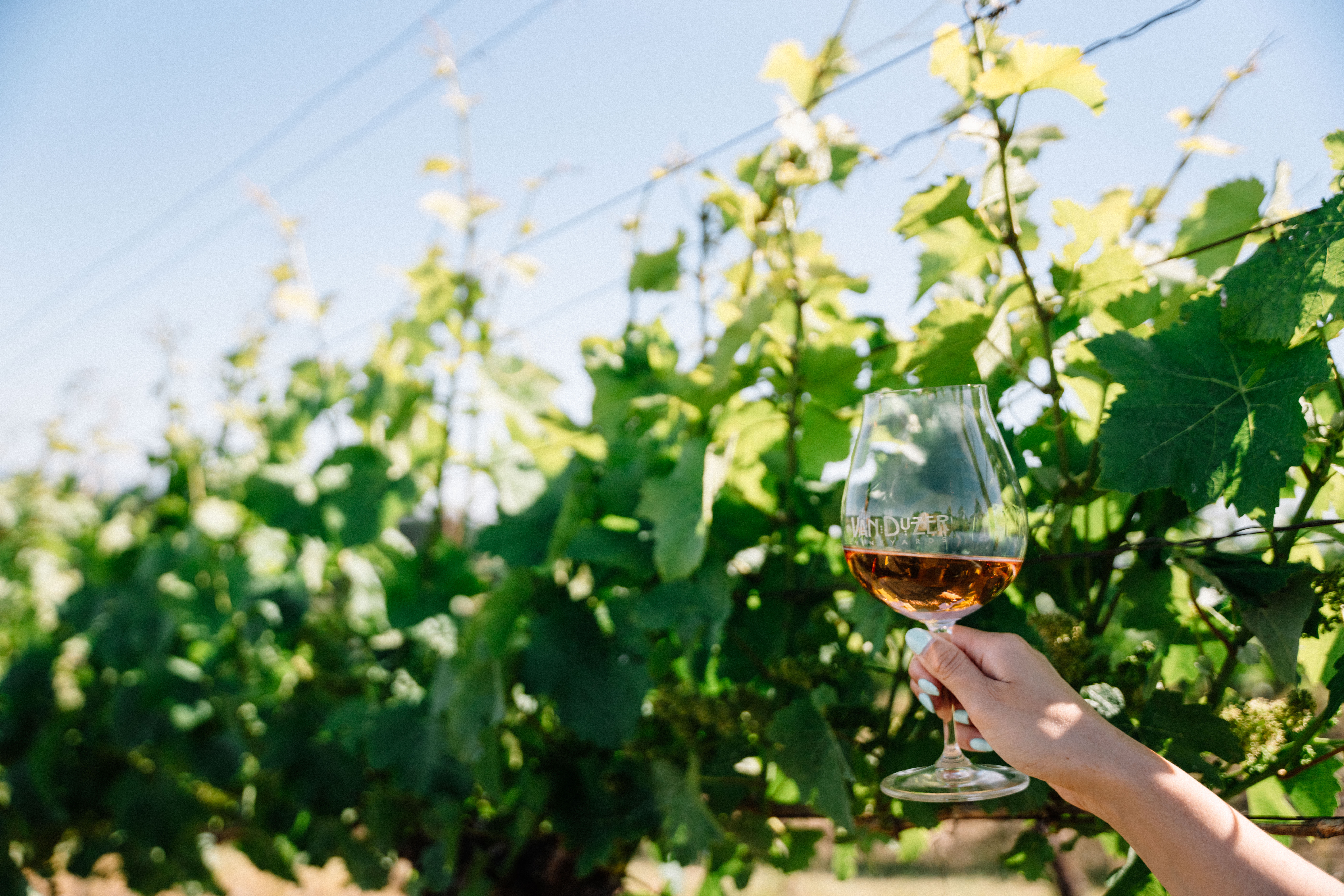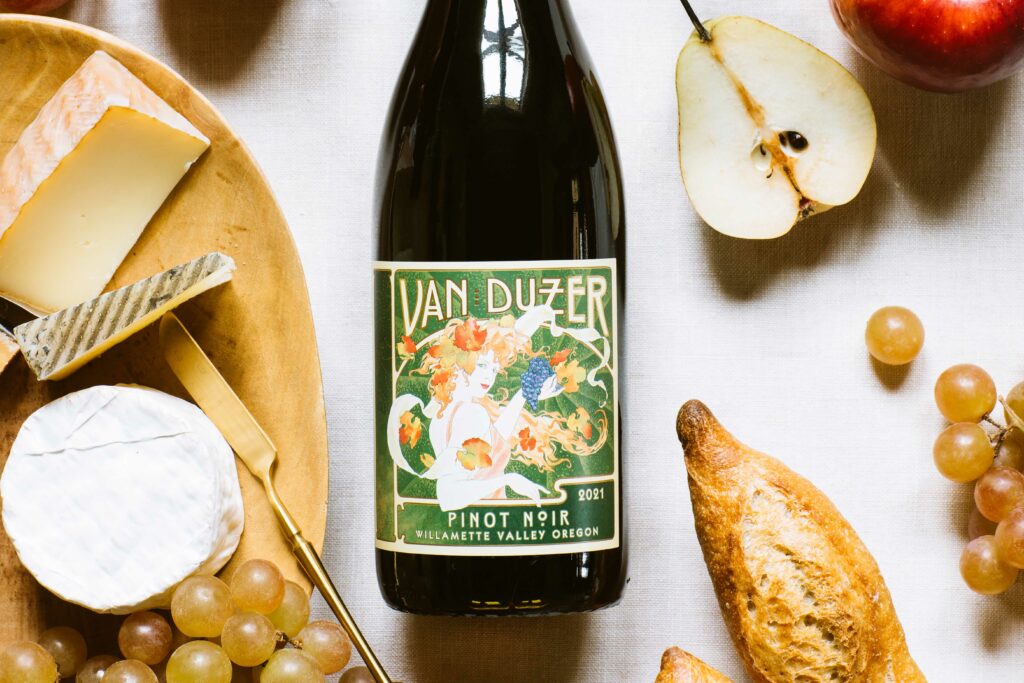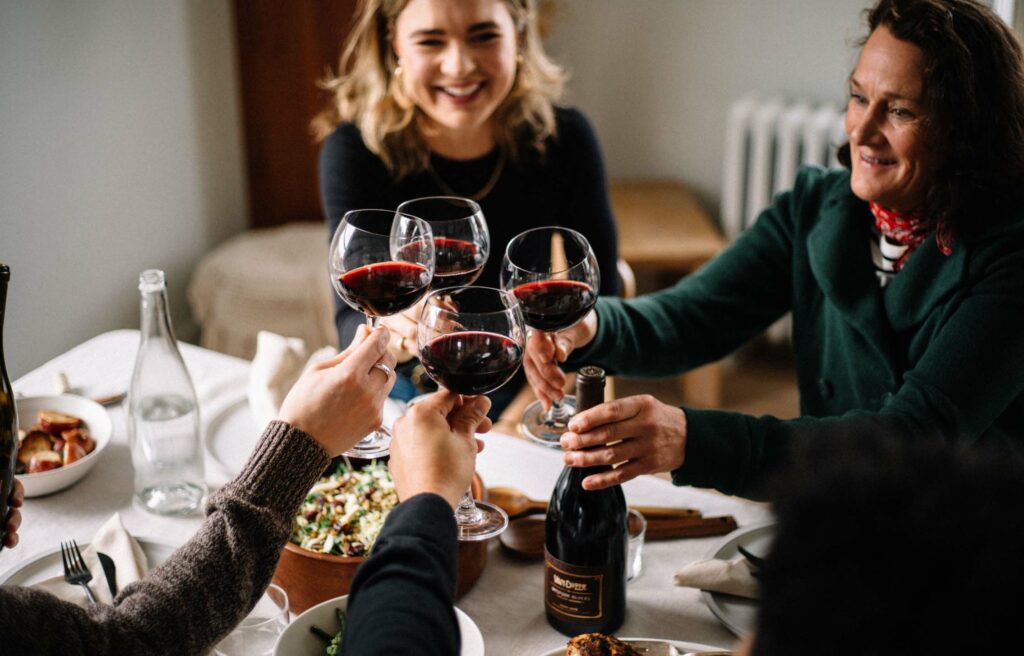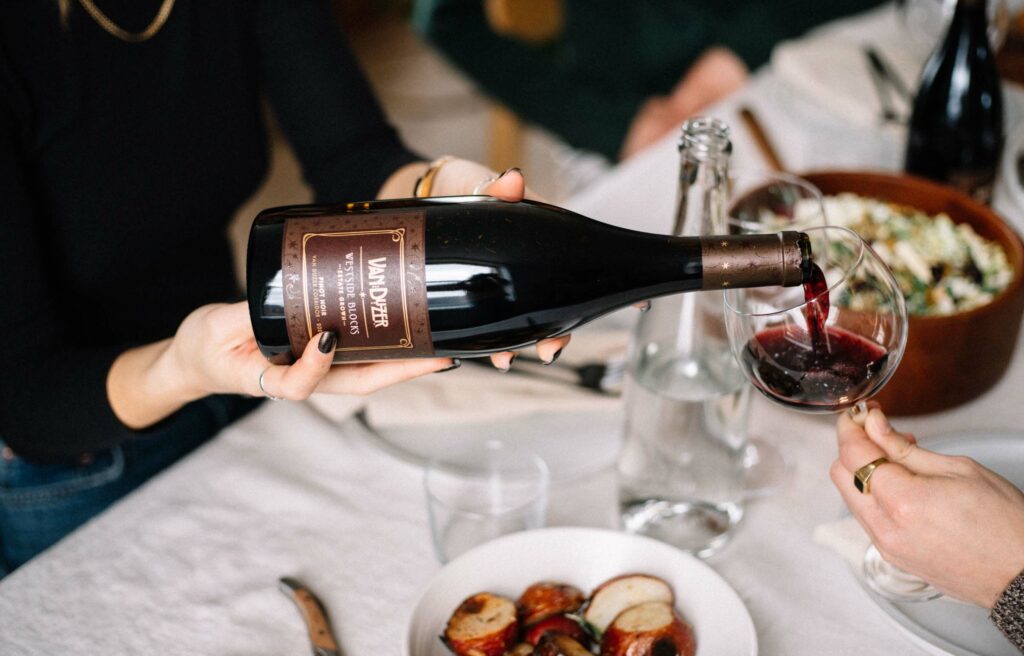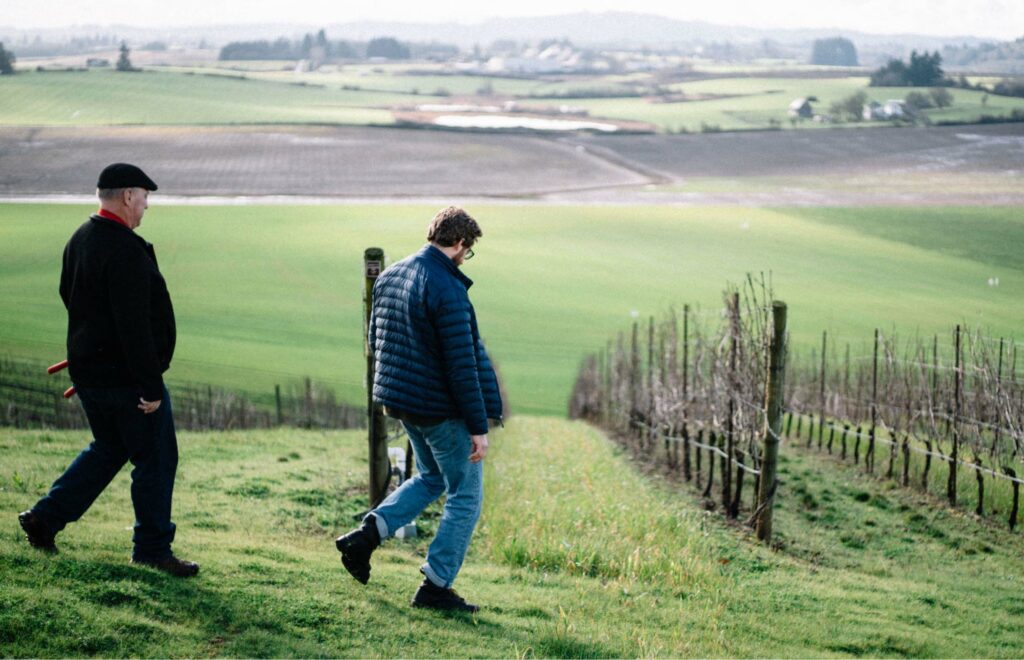In the gentle rolling hills of our windswept corridor, a remarkable alliance has formed between our vines and nature’s smallest warriors. As Earth Month unfolds, we’re taking a moment to celebrate the unsung heroes that help us create exceptional wines while preserving our unique ecosystem.
The Beneficial Insect Brigade: Nature’s Perfect Pest Management System
The morning sun catches a flash of red among the emerald leaves – a ladybug, methodically hunting for its next meal. These iconic spotted creatures aren’t merely charming vineyard visitors; they’re a cornerstone of our integrated pest management approach. A single ladybug can consume up to 5,000 aphids in its lifetime, making them formidable allies in maintaining vine health.
“Lady bugs are extremely cute and fun to play with – but they are voracious predators,” notes Bruce Sonnen, Van Duzer Vineyard Manager. “They love mite eggs, making them particularly valuable in our ecosystem balance.”
The ladybug represents just one member of our diverse beneficial insect community. Earwigs patrol the vineyard floor, consuming countless pest larvae before they can mature and damage our precious vines. Delicate lacewings drift between rows, their larvae so hungry for aphids they’re nicknamed “aphid lions.” Praying mantises perch with predatory patience, their distinctive silhouettes a welcome sight among our vine canopies.
Perhaps most unexpected are our eight-legged guardians – spiders – whose intricate webs serve as natural insect traps throughout the vineyard. Their presence indicates a healthy, functioning ecosystem where nature’s checks and balances operate with minimal human intervention.
The Fascinating Science Behind Beneficial Predators
The relationship between our beneficial insects and the vines they protect reveals the elegant complexity of natural systems. Ladybugs and their larvae don’t just eat mites – they hunt with remarkable efficiency, consuming up to 75 aphids daily. The larvae of syrphid flies (often called hover flies) can devour up to 400 aphids during their two-week development period.
These predator-prey relationships create what ecologists call a ‘trophic cascade’ – where the presence of top predators (in this case, our beneficial insects) impacts multiple levels of the food web. When ladybugs reduce pest populations, vine stress decreases, leading to more balanced growth, improved fruit quality, and ultimately, more expressive wines that truly reflect our distinctive terroir.
Creating Habitat, Not Just Vineyards: The Architecture of Sustainability
At Van Duzer, we understand that supporting these beneficial insects requires thoughtful vineyard design and management. Like any living creature, our tiny allies need food, shelter, and suitable habitat throughout their life cycles.
“We promote flowering covering crops that attract the insects in the first place,” explains Sonnen. “When mowing the vineyards we alternate mow the rows so as to leave habitat for the bugs to move to.”
This alternating mowing pattern creates a patchwork of vegetation heights – some recently cut, others lush and flowering – providing continuous resources for beneficial insects. The diversity of plant species in our cover crops is equally important, with particular attention to umbelliferous flowers (like fennel and Queen Anne’s lace) that attract parasitic wasps, alongside composite flowers (like sunflowers and daisies) that serve as landing pads for ladybugs and lacewings.
We’ve strategically planted hedgerows and pollinator strips along vineyard borders, creating year-round habitat corridors that connect our vineyard to the surrounding landscape. These native plantings provide essential overwintering sites for many beneficial insects, ensuring they’re present when spring arrives and pest pressure begins.
The LIVE Approach: Science-Based Stewardship
This approach aligns perfectly with LIVE (Low Input Viticulture and Enology) certification guidelines. As LIVE Chairperson, Sonnen emphasizes that beneficial insect support is “mandatory and part of the requirements that you follow. Start with the least harmful solution first, always remain on time, on task, and on point. If additional measures become necessary, these approved options are thoroughly researched and vetted by third-party unaffiliated individuals.”
LIVE’s science-based approach requires regular monitoring of both pest and beneficial insect populations, establishing economic thresholds before intervention, and when intervention is necessary, only using approved materials with minimal impact on beneficial organisms.
Monitoring Nature’s Balance: The Art of Observation
Walking the vineyard rows daily, our team conducts informal insect monitoring throughout the growing season. This vigilant observation allows us to detect potential issues before they become problems.
“A main issue for us is erinium mite control,” Sonnen notes. “When these mites feed on grape leaves, they cause a wart/blister type of bump on the leaf turning it bright red when the mite are alive. Once control measures have been used – if the mite has been neutralized – it will turn back green again. Green, good – red, bad.”
These visual cues from the vineyard itself – the color of leaf tissue, the presence of webbing, the activity levels of beneficial insects – inform our management decisions. Rather than adhering to a calendar-based spray schedule, we practice adaptive management, responding to the specific conditions of each vintage and each vineyard block.
Beyond Chemicals: The Power of Ecological Balance
“We always start with the softest approach first. By creating the habitat and places for the beneficials to live and thrive, 80% of the problem is usually resolved,” explains Sonnen. “I have been farming vineyards for 24 years now. I have never had to spray a listed insecticide to the vineyard.”
This remarkable achievement speaks to the effectiveness of working with nature rather than against it. Instead of deploying harsh chemicals that would disrupt the entire vineyard ecosystem, Van Duzer relies on well-timed applications of natural sulfur, which serves both as a fungicide for powdery mildew and a gentle pest control agent when properly scheduled.
This minimalist approach preserves the delicate web of relationships that has developed in our vineyard over decades – relationships that once disrupted, can take years to restore.
The Sheep Connection: Expanding Our Vision of Integrated Farming
Our commitment to ecological balance extends beyond insects to our innovative “flash grazing” practices with sheep. These woolly helpers reduce the need for mechanical mowing while simultaneously fertilizing our soils with nutrient-rich manure.
The benefits cascade throughout the ecosystem. By grazing down competitive grasses, sheep create space for native wildflowers to flourish. These native blooms attract diverse pollinators and beneficial insects, further strengthening our natural pest management system.
“Primarily by showing that the animals can do the work that tractors do – only better. Then create a cool by product that helps fertilize the soil and regenerate for the next years flock,” Sonnen explains. “The grass gets eaten down and allows the native forbes/flowers to grow up and pollinate unrestricted.”
This practice has yielded unexpected benefits for our local ecosystem. “It also allows for other species to move in and utilize the cleaned areas as well,” notes Sonnen. “The acorn woodpeckers can now more easily find the dropped acorns on the ground and store them in the oak trees for over winter food.”
The Conservation Legacy: From Vines to Butterflies
Perhaps most remarkable is how our vineyard practices have supported the endangered Fender’s blue butterfly, demonstrating how agricultural production and conservation can be complementary rather than competing goals.
“I never dreamed when I started at Van Duzer that I would work on a project that would affect the survival of a species,” reflects Sonnen. “It has caused me to think more about what I do and why and how it will affect what comes next. Not just for an immediate gain or solution – but more playing the long game – make the investment and reap the benefits later too.”
This long-term perspective infuses everything we do at Van Duzer. We recognize that sustainable viticulture isn’t just about what happens this season or even this decade – it’s about creating systems that can flourish for generations. Our beneficial insect populations represent a living investment, one that grows in value with each passing year as the ecosystem becomes increasingly self-regulating.
From Vineyard to Glass: Tasting the Difference
The impact of our beneficial insect stewardship extends beyond ecological metrics – it’s something you can taste in every bottle of Van Duzer wine. Vines under less pest pressure develop more balanced fruit. With natural predators keeping harmful insects in check, our vines can direct their energy toward ripening rather than defense, resulting in more nuanced flavors and aromas.
The same cover crops that support our beneficial insects also contribute to soil health, enhancing the microbial communities that help define our wines’ sense of place. This marriage of ecological health and wine quality reflects our fundamental philosophy: exceptional wine begins with exceptional farming.
Joining the Beneficial Insect Movement
As we pour our current vintage this Earth Month, let’s raise a glass to the intricate dance between vineyard and ecosystem – to the ladybugs patrolling our leaf canopy, the spiders weaving their webs between rows, and the countless other tiny guardians that help make Van Duzer wines a true expression of place.
These natural alliances don’t just produce exceptional wines; they create a legacy of stewardship that will outlast us all. By working with nature’s systems rather than against them, we’re creating a model of agriculture that honors both the land and the complex web of life it sustains.
We invite you to visit Van Duzer Vineyards during Earth Month to witness this remarkable system in action. Walk our vineyard rows, observe the beneficial insects at work, and taste wines born from a deep commitment to ecological balance. The story of these tiny guardians is the story of Van Duzer – one glass at a time.

